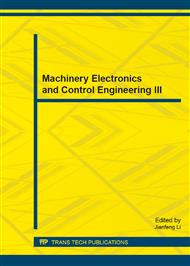p.146
p.150
p.154
p.158
p.162
p.169
p.174
p.178
p.182
Research on Ultra-Wideband TEM Horn Antenna and its Miniaturization
Abstract:
TEM horn antenna is one kind of directional Ultra-wideband antenna with simple structure. Based on the design method of TEM horn antenna, satisfied impedance and radiation character are obtained by simulation and experiment research. On this basis, by means of metal ridged loaded, background dielectric material loaded and distributed lossy metal loaded respectively, the miniaturization character is realized. The simulation analysis results show that load of traditional TEM horn antenna can get efficiently improvement in structure and performance which have widely application foreground in pulse radiation communication system and ultra-wideband radar system.
Info:
Periodical:
Pages:
162-165
Citation:
Online since:
December 2013
Authors:
Keywords:
Price:
Сopyright:
© 2014 Trans Tech Publications Ltd. All Rights Reserved
Share:
Citation:


